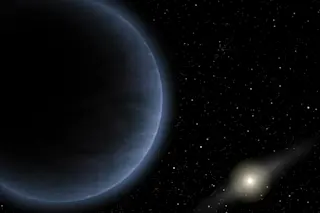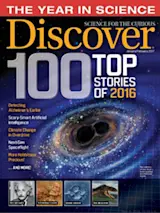A decade after Pluto’s planetary demotion, the solar system may be back to nine planets. Like an unseen spider visibly tugging on a web of gravitational strings, a hidden celestial body is luring distant space rocks into clusters of orbits too conspicuous to ignore.
At first, Caltech astronomers Mike Brown and Konstantin Batygin thought their theory, published in January, was little more than a cute math trick: They calculated that a planet, a “mini-Neptune” with an elongated orbit, could explain why some objects beyond Neptune seem oddly grouped in space. But Brown is well aware of the historical context surrounding his tall claim and the skepticism that should accompany it. Even though mathematicians announced evidence for Neptune before its 1846 discovery, many more assertions of hidden planets have fallen short. “Since 1845, every time anybody looks up in the sky and sees something they don’t understand, they say it’s a ...















